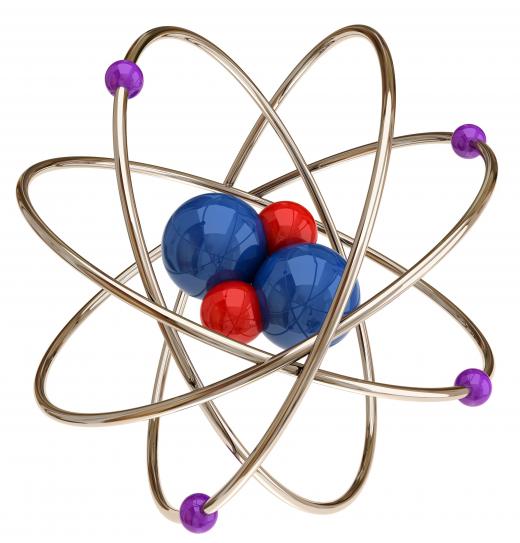What Is an Atomic Orbital?
An atomic orbital is a region of space around the nucleus of an atom where an electron is located. The exact location can only be approximated by using the laws of probability. Atomic orbitals occupy spherical areas around the nucleus in three dimensions, so electrons do not orbit the nucleus like a planet orbits a star. There are different shapes to orbitals as well; one type that symmetrically surrounds the nucleus of an atom, and another that spreads in different directions on either side of the nucleus. Each atomic orbital, no matter its type, is situated at different energy levels that extend farther from the nucleus, with the lowest energy level being the closest.
When an energy level surrounds the nucleus, it is called an s orbital, and when the orbital spreads on either side, it is identified as a p orbital. There are various other shapes to atomic orbitals as well, which help to describe the nature of electrons as waves surrounding a nucleus. Atoms with a single electron are structured like a planet with an atmosphere, and atoms with many electrons seem to have a cloud of electrons surrounding them. Electrons near the nucleus have lower energies, while orbitals become more complex at higher energy levels farther from the nucleus.

A quantum number is used to define electron energy states, and electrons change energy levels by emitting or absorbing energy. At any given moment, the state of an atom is determined by analyzing its electron configuration, which can change as it interacts with other atoms and molecules in the environment. There are up to three p orbitals in any level, except the first one around the nucleus, and the higher the energy level, the more elongated the orbital is. Each atomic orbital holds two electrons which are differentiated by the direction of their spin.
In the atoms involved, each atomic orbital interacts during the formation of molecules and compounds. In linear combination atomic orbitals, two or more atoms can share electrons between the orbitals of each. Hybridization atomic orbitals theory describes the shape of a molecule when the it is bonded together by one atom rather than a few. It can include the combination of both s and p orbitals and the number of electrons is indicated as well. The atomic orbital of each electron in an atom is studied by experts in quantum mechanics to understand the complexity of atoms, and how they interact.
AS FEATURED ON:
AS FEATURED ON:











Discuss this Article
Post your comments